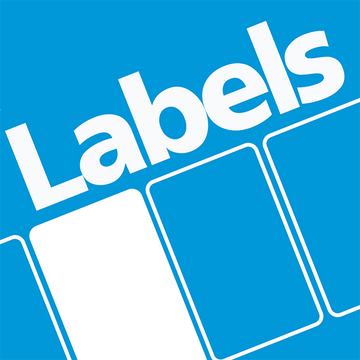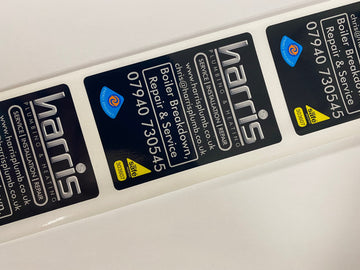Thermal Transfer printing uses a ribbon of ink to transfer the image from the heated printhead of the label printer onto the surface of the label. Direct Thermal printing transfers the image directly onto a heat sensitive material.
There are pros and cons to both methods. Direct Thermal does not require a label printer that uses a ribbon, therefore making it a cheaper label printer. However, the labels are generally more expensive. That said, there is no ink ribbon cost, therefore the actual printed label cost is very similar. Direct Thermal also requires the label printer’s printhead to be in direct contact with the label itself. If you are printing high volumes of labels, you will find that the printhead wears out quicker than one used for Thermal Transfer label printing.
The printed label will also differ in quality. Direct Thermal is usually only used for labels that will have a short shelf life such as shipping labels and best before dates. This is because the heat resistant labels generally fade in daylight over time, depending on the level of UV light. Even when the labels are in an indoor office environment, the label will generally start to fade after 12 months.
Direct Thermal Labels with a "Top Coat" are available to ensure more resistance to UV light, though this means an increase in label price. Most Direct Thermal labels are the uncoated type and are used for short term labelling solutions.
Thermal Transfer label printing uses exactly the same method of printing. However, with thermal transfer, an ink ribbon is used to transfer the printed image onto standard paper labels or synthetic labels. The end result is a printed label that will not fade in sunlight and will generally be readable for many years. Because an ink ribbon is used, this acts as a buffer between the printhead and the label itself, leading to increased printhead life.
Thermal Transfer label printing can be used to print paper as well as synthetic type labels including polypropylene, polyethylene, vinyl and polyester in both matt and gloss.
Go for thermal transfer printing if you need durable and high-resolution images, especially for traceability applications and labels that need to withstand abrasion, chemicals and exposure to light and heat. For simple and cost-effective labels with a short shelf life, direct thermal printing might make more sense. Both types of labels are available here at Earlsmere.









